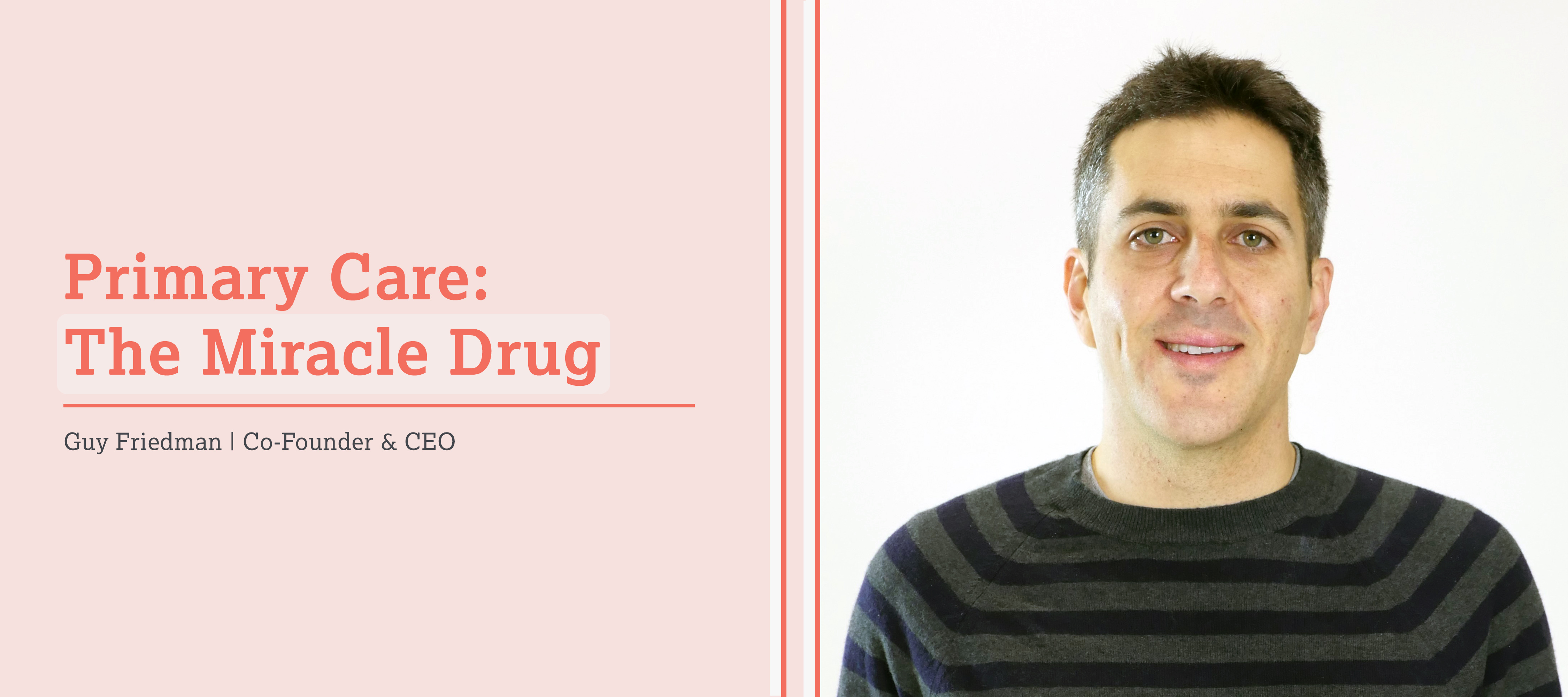Our mission at SteadyMD is to make high-quality, high attention concierge health care available and affordable to millions of Americans. A real relationship with a doctor who “gets you” and is part of your life. Guy Friedman, the Co-Founder, and CEO of SteadyMD took a real look at the benefits of primary care and the doctor-patient relationship.
The Miracle Drug that Changes Lives
What if there was an accessible, affordable and available drug that fundamentally helped all people live longer, better and actually prevented chronic disease?
How much would you pay for that? If everyone took it, it would save the “system” $13 for every $1 invested, reduce ER visits and help reduce expensive chronic diseases.
Your Time vs. the Doctors’
In the US, we are approaching 3,000 patients per primary care doctor, 20 day wait times for appointments, and 10-minute appointments when you actually get in the door. Additionally, a primary care doctor spends 50% of their time coding into their EMR (here too) and the average amount of uninterrupted time with a doctor is 11 seconds. That means that if you go to the doctor, start talking and time how long it takes to be interrupted you’ll only have to wait 11 seconds.
The Importance of a Doctor-Patient Relationship
Across 22 studies and 9 countries, the results are consistent: Having the same primary care doctor, year after year has significant health benefits.
Lots of folks are investing in technology/apps, retail care, urgent care, and telemedicine, where at the core – the goal of these companies is to squeeze as many patients as possible into the shortest amount of time. Basically, solving the “access” problem by randomizing the primary care doctor at every appointment, or reducing the amount of time a doctor spends with a patient.
The Need for Patient-Centric Care
This can be beneficial in terms of access, but here’s the issue: The physician is still the most trusted source of healthcare for patients.
Without a trusted source, patients (in general) do not:
So without a trusted physician, participation in these fantastic apps will be lower, therefore less useful in solving systemic health problems.
The Future of Primary Care
To reform healthcare fundamentally, we need to invest in relationships with primary care doctors – which means FEWER patients per doctor.
